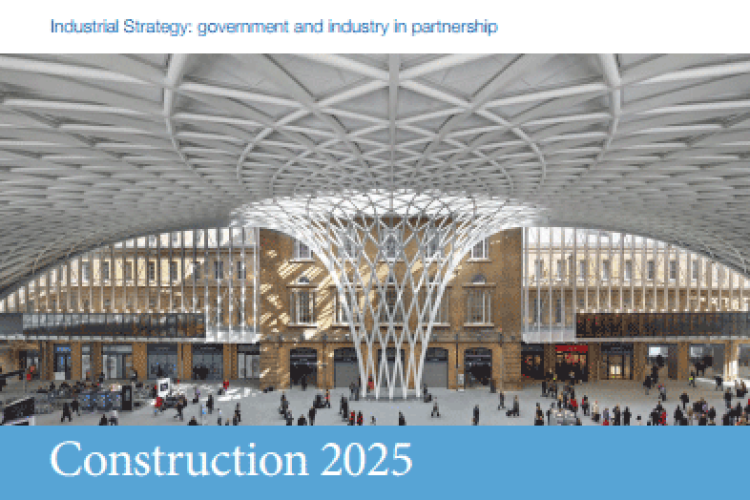The Department for Business, Energy & Industrial Strategy (BEIS) today said that its sector deal with the construction industry, part of the industrial strategy that it published earlier this week, would transform the industry and ‘could add billions of pounds to the economy’.
It said that judicious allocation of £170m research funding (to be matched by £250m from industry), coupled with reform of the Construction Industry Training Board and an improved approach to promoting construction careers would make the industry cheaper, cleaner, faster and better. It said the new deal would help the industry meet four strategic objectives by 2025. These are: a 33% reduction in the cost of construction; a 50% reduction in the time taken to deliver projects; a 50% reduction in greenhouse gas emissions in the built environment; and a 50% reduction in the trade gap of construction products and materials.
Despite appearances, these are not new targets. They were set out in 2013 in the Construction 2025 strategy document with somewhat greater precision than those put out by BEIS today.
The 2013 targets were:
- a 33% reduction in both the initial cost of construction and the whole life cost of assets, based on 2009/2010 benchmarks.
- a 50% reduction in the overall time from inception to completion for new build and refurbished assets, compared to 2013 levels.
- a 50% reduction in greenhouse gas emissions in the built environment, versus a 1990 baseline.
- a 50% reduction in the trade gap between total exports and total imports for construction products and materials (using 2012’s trade gap of £6bn as the starting point).
Simon Rawlinson of the Construction Leadership Council confirmed that the targets listed today are indeed the same as the 2013 targets, with the same benchmarks. Nothing has changed in this regard. For example, the 50% reduction in emissions is compared to 1990, not compared to 2017, which was the misleading impression given by today's announcement from BEIS.
However, Mr Rawlinson also admitted that the CLC was not currently measuring progress on its targets. This means that a third of the way into the 12-year-plan, there is no readily-available document that tells us how we are doing – no annual review, no performance appraisal. We know where we are meant to be going and how we are meant to get there but we don't how far we've gone.

Mr Rawlinson said that some sector organisations were monitoring progress for themselves where it related directly to their sector. The UK Green Building Council, for example, knows that embodied and operational carbon of the built environment* was 225 MtCO₂e in 1990; in 2014 (latest available data) it was 185 MtCO₂e. That means it fell 18% in the first 24 years; there are 11 years left to hit the target.
And the building materials trade gap is being measured by BEIS. It is moving in the wrong direction, reaching £9.1bn in 2016 – an increase of 50% from 2012's £6bn.
But the CLC itself is not monitoring the targets it laid down so it cannot say how much construction costs and speeds have moved, or even in which direction.
On the plus side, Construction 2025 also set out a statement of five non-specific aspirations, to become:
- an industry that is known for its talented and diverse workforce
- an industry that is efficient and technologically advanced
- an industry that leads the world in low-carbon and green construction exports
- an industry that drives growth across the entire economy
- an industry with clear leadership from the Construction Leadership Council.
On this basis, while the CLC will struggle to prove its success on the measurable objectives, it could make a perfectly decent case for having achieved at least four of its five aspirations.
* These figures do not include cooking and plugloads in buildings, nor direct emissions from road and rail transport.
Got a story? Email news@theconstructionindex.co.uk



